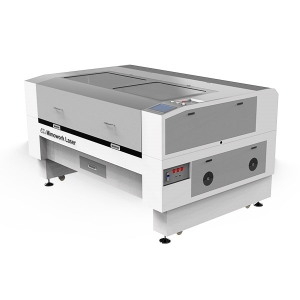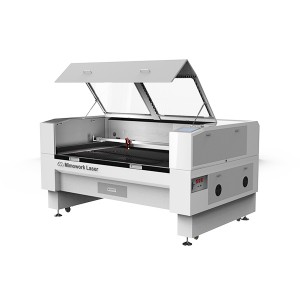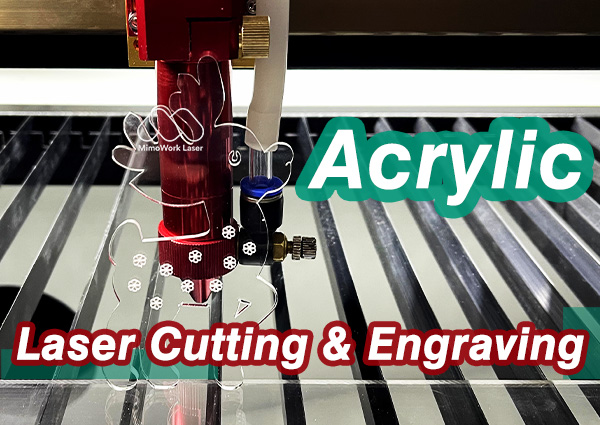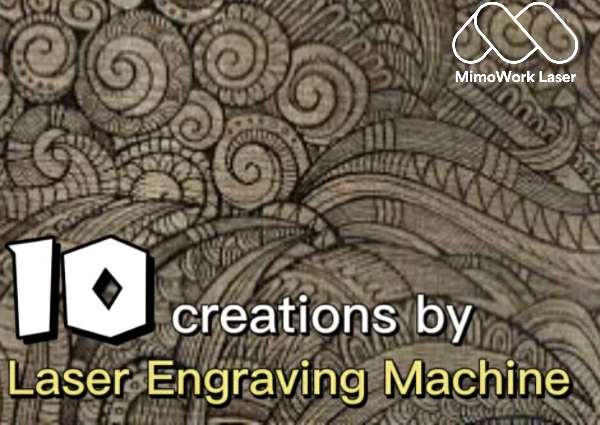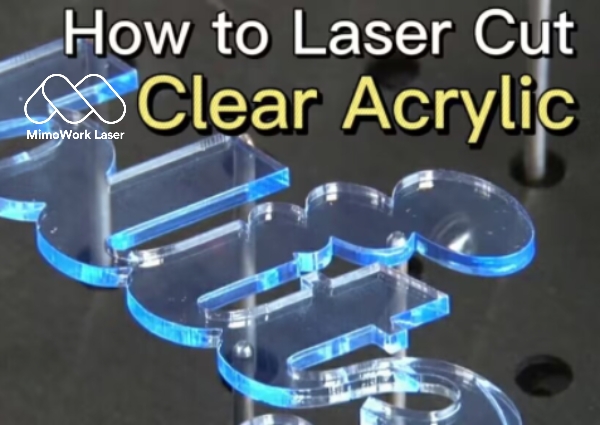5 Essential Techniques to
Perfectly Laser Engrave Plastic Every Time
If you’ve ever tried laser engraving plastic, you must know it’s not as simple as hitting “start” and walking away.One wrong setting, and you might end up with a bad design, a melted edges, or even a warped piece of plastic.
But don’t worry! With MimoWork’s machine and 5 essential techniques to perfect it, you can nail crisp, clean engravings every time.Whether you’re a hobbyist or a business crafting branded merchandise, these 5 tips about laser engrave plastic will help you.
1. Choose the Right Plastic

Different Plastic
First, not every plastic plays nice with lasers. Some plastics release toxic fumes when heated, while others melt or char instead of engraving cleanly.
Please start by picking laser-safe plastics to avoid headaches and health risks !
▶ PMMA (Acrylic): The gold standard for laser engraving. It engraves smoothly, leaving a frosty, professional finish that contrasts beautifully with the clear or colored base.
▶ ABS: A common plastic in toys and electronics, but be cautious—some ABS blends contain additives that can bubble or discolor.
If you want to laser engrave ABS, test a scrap piece first!
▶ PP (Polypropylene) and PE (Polyethylene): These are trickier. They’re low-density and can melt easily, so you’ll need super precise settings.
Better save these for when you’re comfortable with your machine.
Pro Tip:Steer clear of PVC entirely—it releases harmful chlorine gas when lasered.
Always check the plastic’s label or MSDS (material safety data sheet) before starting.
2.Dial In Your Laser Settings
Your laser’s settings are make-or-break for plastic engraving.
Too much power, and you’ll burn through the plastic; too little, and the design won’t show up. Here’s how to fine-tune:
• Power
Start low and increase gradually.
For acrylic, 20-50% power works well for most machines. Thicker plastics might need a bit more, but resist cranking it up to 100%—you’ll get cleaner results with lower power and multiple passes if needed.
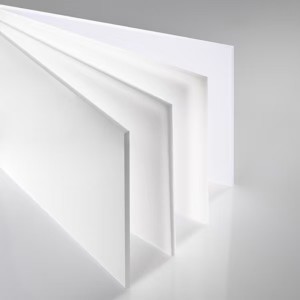
Acrylic
• Speed
Faster speeds prevent overheating.
For example,clear acrylic maybe crack and break at low-speed settings.Aim for 300-600 mm/s for acrylic; slower speeds (100-300 mm/s) can work for denser plastics like ABS, but watch for melting.
• DPI
Higher DPI means finer details, but it also takes longer. For most projects, 300 DPI is a sweet spot-sharp enough for text and logos without dragging out the process.
Pro Tip: Keep a notebook to jot down settings that work for specific plastics. That way, you won’t have to guess next time!
3.Prep the Plastic Surface

Lucite Home Decor
A dirty or scratched surface can ruin even the best engraving.
Take 5 minutes to prep, and you’ll notice a huge difference:
Choosing the Right Cutting Bed:
Depends on the material's thickness and flexibility: a honeycomb cutting bed is ideal for thin and flexible materials, as it offers good support and prevents warping; for thicker materials, a knife strip bed is more suitable, as it helps reduce the contact area, avoids back reflections, and ensures a clean cut.
Clean the Plastic:
Wipe it down with isopropyl alcohol to remove dust, fingerprints, or oils. These can burn into the plastic, leaving dark spots.
Mask the Surface (Optional but Helpful):
For glossy plastics like acrylic, apply a low-tack masking tape (like painter’s tape) before engraving. It protects the surface from smoke residue and makes cleanup easier—just peel it off after!
Secure it Tightly:
If the plastic shifts mid-engraving, your design will be misaligned. Use clamps or double-sided tape to hold it flat on the laser bed.
4. Ventilate and Protect
Safety first!
Even laser-safe plastics release fumes—acrylic, for example, emits a sharp, sweet smell when engraved. Breathing these in isn’t good, and they can also coat your laser lens over time, reducing its effectiveness.
Use Proper Ventilation:
If your laser has a built-in exhaust fan, make sure it’s on full blast. For home setups, open windows or use a portable air purifier near the machines.
Fire Safety:
Be cautious of any potential fire hazards and keep a fire extinguisher near the machines.
Wear Safety Gear:
A pair of safety glasses (rated for your laser’s wavelength) is non-negotiable. Gloves can also protect your hands from sharp plastic edges post-engraving.
5. Post-Engraving Cleanup
You’re almost done—don’t skip the final step! A little cleanup can turn a “good” engraving into a “wow” one:
Remove Residue:
Use a soft cloth or a toothbrush (for small details) to wipe away any dust or smoke film. For stubborn spots, a tiny bit of soapy water works—just dry the plastic immediately to avoid water spots.
Smooth Edges:
If your engraving has sharp edges which are common with thicker plastics, gently sand them with fine-grit sandpaper for a polished look.
Laser Cutting & Engraving Acrylic Business
Perfect for Plasitic Engraving
6.Recommended Machines
|
Working Area(W*L) |
1600mm*1000mm(62.9” * 39.3”) |
|
Software |
Offline Software |
|
Laser Power |
80w |
|
Package Size |
1750 * 1350 * 1270mm |
|
Weight |
385kg |
|
Working Area(W*L) |
1300mm*900mm(51.2” * 35.4 ”) |
|
Software |
Offline Software |
|
Laser Power |
100W/150W/300W |
|
Package Size |
2050 * 1650 * 1270mm |
| Weight | 620kg |
7. FAQs about Laser Engrave Plastic
Absolutely!
Dark-colored plastics (black, navy) often give the best contrast, but light-colored plastics work too—just test settings first, as they might need more power to show up.
CO₂ laser cutters.
Their specific wavelength is ideally matched to effectively handle both cutting and engraving across a broad range of plastic materials. They produce smooth cuts and accurate engravings on the majority of plastics.
PVC(Polyvinyl chloride) is an extremely common plastic, finding use in numerous essential goods and everyday items.
Yet laser engraving it is not advisable, as the process releases hazardous fumes containing hydrochloric acid, vinyl chloride, ethylene dichloride, and dioxins.
All these vapors and gases are corrosive, poisonous, and cancer-causing.
Using a laser machine to process PVC would put your health in danger!
Check your focus—if the laser isn’t properly focused on the plastic’s surface, the design will be blurry.
Also, make sure the plastic is flat because warped material can cause uneven engraving.
Learn More about the Laser Engrave Plastic
You may be interested in
Any Questions about Laser Engrave Plastic?
Post time: Aug-07-2025


